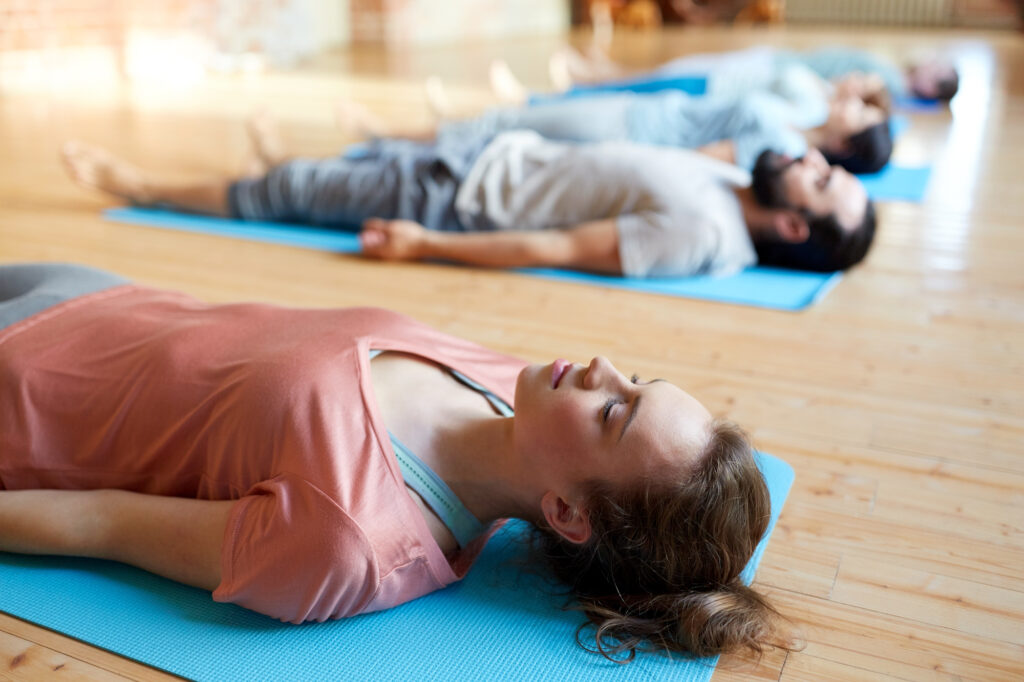Body scan meditation: what to know

During the he body scan meditation, the individual performs a mental review of their physical condition . This action allows you to easily identify the points where tension builds up in the body.
As a method of relaxation, the body scan is particularly effective in counteracting insomnia, if practiced just before you going to bed. It’s also a recommended exercise to reduce stress levels.
Receive all our tips by email!
Love Astrology? Subscribe Now and Receive Exclusive Content!
The experts in meditation and mindfulness suggest that the first body scan exercises be performed under guardianship, following the principle of guided meditations.
In this case, the beginner can count on the help of an instructor, who directs the practice personally or through a prerecorded audio, where the body scanner sequence will be presented, so that the student can follow it. Each body scan session can last 5 minutes to half an hour, and even longer, it all depends on the interest, objective and level developed by who performs the exercise.
Body scan: how it works?
It’s important to emphasize that the meditation of the body scan helps to resume contact with the body itself , which can generate discomfort in some people with emotional wounds.
If this situation comes before you, you can stop the practice and consult a professional therapist on the revived issue, or study it for yourself from a different perspective, without blaming yourself or punishing yourself.
Remember that much of the work of conscience consists in loving and accepting you, offering you the same compassion you offer to others, and learning to connect with your own source of compassion.
When it comes to starting the body scan exercise you must ensure that you will have enough time for it, in a quiet place, where you cannot be disturbed or interrupted.

Some important steps
- Disconnect electronic devices such as television, radio, phones, tablets and others. Make sure you wear loose and comfortable clothes, nothing that squeezes you or creates discomfort.
- Lie on your back on a bed or mat. Extend the arms to both sides of the body, in a relaxed attitude and with the palms of the hands pointing up. It’s possible to perform the seated body scan, but in the beginning you better lie down, during the first practices. You can experience both positions (lying or sitting) and choose the one you consider most comfortable for your body.
- Breathe slowly, following your own pace, neither fast nor slow. Begin to be aware of the weight of your body on the surface on which you are leaning (bed or chair), and recognize the points of contact between them.
- Focus your attention on the breath. Identify yourself with entering and leaving the air; If at any time your thoughts try to distract you from the exercise, let them run and focus again on the breath.
- When you feel connected to the moment, start the body scan process: mentally go through each point of your body, starting with the toes (first one foot, then the other).
- Take a mental note of your sensations (what do the toes feel? Cold, heat, pain, any injuries?). Take your breath to the limb you are scanning, as if you could feel your breath through it.
- Perform the same exam in each part of your anatomy, until you reach the head. You can take as much time as you want at each point. If you lose your attention, return it to your breathing process.
Once the complete sequence is finished, end the meditation slowly. You must remember that you have gained a new state of body consciousness.
You may also like:
- Walking meditation: a guide to find your inner peace
- Learn how to start Transcendental Meditation
- Zazen meditation: 11 steps to a happier state of mind
- Meditation for acceptance: develop your self-knowledge

